Grouse Shells: What Would You Like?
We’re in the process of designing our own shells for ruffed grouse. “Designing” doesn’t mean the engineering parts since neither of us is a reloader. It means the specs.
Why are we doing it? Hunters can find upland shells and pheasant shells – and even shells designed for the different clay disciplines – but no one makes grouse-specific shells…no doubt because the market isn’t big enough, but that doesn’t matter to us.
So what would be the optimal aspects of a grouse shell:
1. Pattern opens quickly.
> We’d rather have the pattern open quickly and adjust that by choke. Also needed because some of the older guns have fixed chokes that are too tight.
> For us, Spred-R type shells don’t do what we want.
2. Medium to slow speed.
> Pheasant-type nitro loads not needed, for shot speed/pattern and recoil reasons.
> We’re even thinking that a so-called slower velocity might not be bad, to get the most out of a swing.
3. Two shot sizes.
> That means #7.5 and #6. Maybe the #7.5 shell tweaked to open faster since that will be the first barrel.
> For us, as we said in the book, #7.5 pellets somehow outperform #8s (check it on a clays course), and #6s definitely beat #7.5s at distance (over 20 yards).
4. Shot type
> Lead or a non-steel lead substitute?
5. At least two gauges, hopefully three or four.
> 12ga and 20ga are requirements, hopefully 16ga next in line, and maybe even 28ga for you amazing shots….
_____
Maybe we’re describing a shell that already exists but isn’t marketed as a grouse shell. Not sure. There’s definitely some good ammo out there, some GREAT stuff for pheasants (Federal and Fiocchi come to mind).
But can one of those recipes be tweaked even more for ruffies? That’s what we’re talking about…and we believe so!
Let us know what you’d like to see in a grouse shell….
Category: Ammo/shells, Ruffed Grouse, SBH

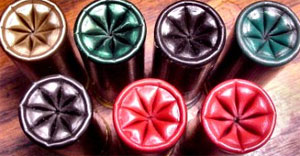




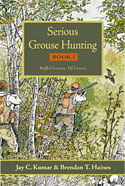
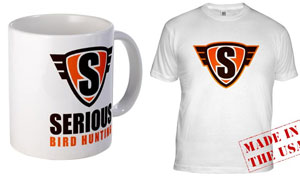

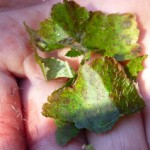


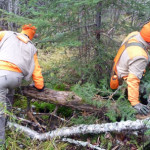
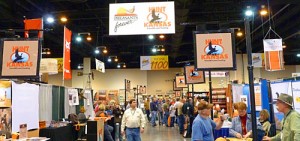
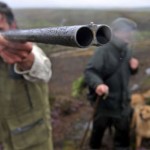
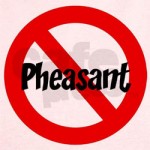
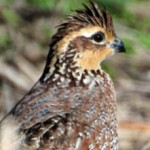
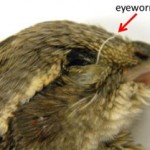

Guys,
Great post and question.
I believe Federal’s Quail Forever ammo to be an outstanding ruffed grouse load.
It’s not super fast and they are 8s, but it’s pretty effective: http://www.federalpremium.com/products/details/shotshell.aspx?id=693
For the conditions we have down here,we like #6 @ 1300 FPS (SPEED KILLS) #7.5 are ok, in the right barrel . To take a bird that flys into a laurel or rhododendron patch you need all the help you can get. I often will double tap a shot when they turn into heavy cover, it works.I don’t have alot of faith in any load less than #6s at long range (40yds) + Once a grouse has “set his wings” he’s harder to drop, you need to break a wing . This year I’ll try some 3″ #6s in my 20 ga. Anyone have any thoughts on that?
For the 2 3/4″ 16 gauge, any of the major ammunition makers Game Loads in 7 1/2’s or 6’s work well.
For the old French 2 1/2″ Side by Side, RST’s in 7 1/2’s, 7’s or 6’s fill the bill.
Pheasants and Ducks will require 6’s as a minimum and 5’s and 4’s would be better.
As far as non-toxic shot goes, NICE Shot is the only way to go and is getting more competitive price wise with their factory loaded offerings in 12 ga., 16 ga. & 20 ga.
If handloading, I don’t think anyone needs more than 1 ounce of shot at more than 1200 FPS. That single load, in lead or NICE Shot in any of the previously mentioned shot sizes, would fit the bill for anything from Ruffed Grouse to Pheasants and probably be enough for most decoyed ducks
Sounds like Polywad’s Spreaders to me. Even has a grouse on the box. Check them out!
A few years ago I began reloading because I was not satisfied with the 28 gauge shells on the market for grouse hunting. These are the loads I came up with for grouse hunting throughout the season as the the conditions change. They work well in my gun… RBL 28 gauge choked skeet and light mod.
Close Range … 1 ounce soft lead core nickel plated #7.5 shot 1350 fps.
Med Range … 1 ounce soft lead core nickel plated #7 shot 1350 fps.
Med to Long Range … 1 ounce hard lead core nickel plated #7.5, #7 or #6 shot 1350 fps.
Longest Range … 1 ounce hard lead core nickel plated buffered #6 shot 1350 fps.
If you like lighter recoil and lower velocities its no problem to use less powder to achieve the velocity you want. By using soft or hard lead or a buffering agent you can get almost any size pattern you want within reason for a fixed choked gun.
Mike
I have been very pleased with the Polywad Spread-R load shells in the 20 ga 7 1/2 shot size followed up with a Fiocchi Golden Pheasant 20 ga 3″ #6 shot size. The 3″ gives me the added pellets out there.
Have I missed some previous information on shells or patterning? I would be curious about your note “For us, Spred-R type shells don’t do what we want.”. For me they are seemingly the cats meow! I’m always open to something better but as of right now I would not leave home without them.
http://www.polywad.com/spredr.html
I have also want to try these out… Give them a try and let us now how they work!
It looks like they got a lot of different option of shells.
To improve chances of killing and not wounding Grouse: For shots under 30 yds, 12GA IC choke,1-1/8oz #7-1/2 with about 1160fps MV to keep recoil down in prep for possible 2nd shot. 3% antimony shot for good patterns at the fringes will also flatten a little on impact at retained velocities under 30 yds yielding slightly greater pellet shock from multiple pellet hits in the 3.5″ dia kill zone with not less than 2-1/2″ penetration through feathers and ribcage. Example: Fiocchi Exacta12SD18L 7.5 (3% antimony), 1165 fps
For shots greater than 30 yds, 12GA M choke, #7-1/2 with about 1200fps MV to ensure 2-1/2″ penetration at the longer distances up to 43 yds. 5-6% antimony shot to ensure the densest possible patterns and least shot distortion. 1-1/8oz load in fixed breech, or perhaps 1-1/4oz in semi-autos that will absorb more recoil. Example: Remington STS12LH 7.5 (6% antimony), 1200 fps.
For 20GA, getting ~4 pellets in the 3.5″ kill zone requires a very tight pattern and a very good shot at longer distances over 30yds. For my ability it’s a shorter range gun.
16ga with 1 oz of #7 lead is pretty tough to beat.
I load mine with spreader inserts, works for me out of some of my guns, but not necessary.
1300+fps for me, speed doesn’t hurt a thing, and NO it doesn’t necessarily “blow” patterns!
1oz of #6 made in both regular and spreader loads….speed around 1250fps is sufficent….make em in 16ga and I’ll be happy……..Art
3/4 to 7/8 oz. of #81/2 shot with spreader wads works very well in my 28ga. 1200 to 1300 fps. most of my shots are under 30yds.
It looks like you guys are on the right track. I hunt in Western WA. Thick brush and quick shots. I use CYL early and IC to Mod. later. I find my patterns with most of my shotguns are better at 1200 fps or less. Velocities need to be above 1100FPS. Speed is dependent on the individual shot gun as is pattern. High Velocity nontoxic loads seem to blow right through the bird and not killing. I also use older doubles. The nontoxic shot on the market does not seem to work as well as slower lead. 7/8 to 1 OZ. of shot in 6 or 71/2 works for me. I use the same powder & loading data I use for trap except for spot size is #8 for trap/skeet. I notice no real differance when I am on target. Keep your head on the stock. BTW I am noty a fan of spreader loads eather.
Over the past 30 years I have killed grouse with shot sizes 8,7.5,7,6,5,and 4’s. I have used cheep promo loads, hard lead shot, copper plated and nickel plated shot. All of which will kill grouse if you hit them hard enough. However with the smaller sizes more hits are usually required to drop the bird. I think standard high brass 12ga. 1 1/4 1330 #6’s are the best all around load for anytime of the year. I have never tried but,I guess you could kill them with #9’s if the shot was close. Grouse are not hard to kill but they are hard to hit.
For 12 gauge I really like Bornaghi shells. Specifically either Star or Extreme 1 ounce loads @ from 1350 to 1300fps. I shoot them out of a Caesar Guerini Magnus Lite that’s under 6 pounds. The recoil is not harsh and second shots are quick if needed. I prefer #8 shot and birds out to 40 yards fall hard. I’m using Mueller U0 tubes in both barrels. This is my new all time favorite combo and I’ve been searching for the perfect load for 50 years.
Having hunted spreader / disperser loads for the past 30 years in the US and In Europe , on European and American Quail , on European and American Woodcock , on Ruffed Grouse , Released / stocked Pheasants and European Mourning doves .
Having tried American Manufacturers Such as Spread-R and many European Manufacturers such as B&P …., I have come to the conclusion that proper Opened Choke/s , Gun fit , Balance shotgun , crisp Trigger pull weight/s , moderate recoil , proper shot size( always use the smallest size needed per bird type hunted ), confidence in your self and your equipment ,solid knowledge of Bird behavior, clear eyesight ,strong legs and back, good dog and many hours in a days hunt and many days of practice , practice , practice low gun skeet shooting every week ……
All of the above is the ultimate recipe !!!!
………… This coming Fall will be my 53rd season afield in pursuit of the wily Eastern Ruffed Grouse. … Most all of my early season (October 1st-November 25th.) shots are taken at well under 20-25 yards. … I have been using a double barrel 28 gauge shotgun for several seasons/decades now. … I have found out by extensive experience that 1oz of #8 shot works just fine for me, this, every single time. … Center a bird in that shot pattern squarely and it will fall, no doubt what-so-ever, every time.